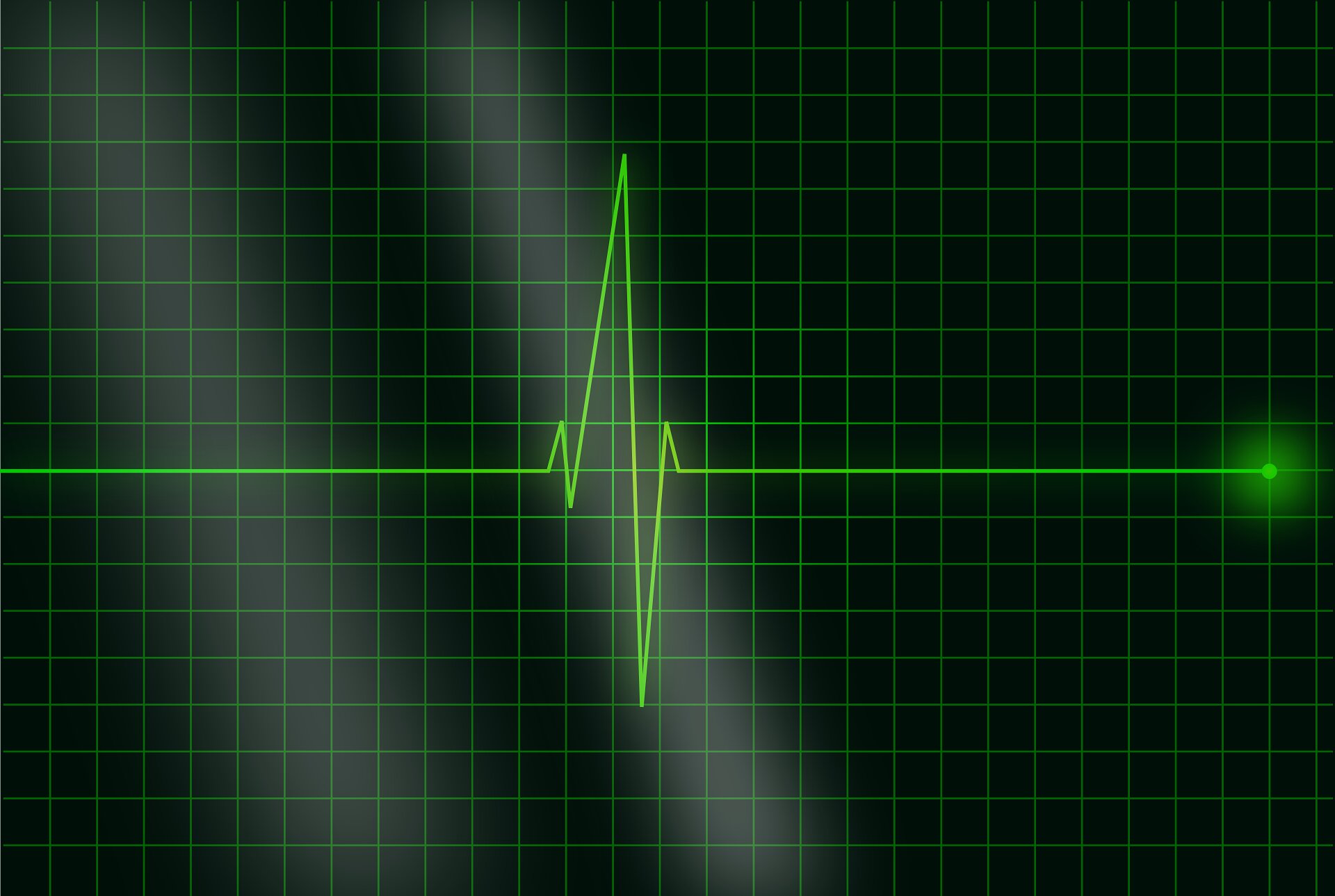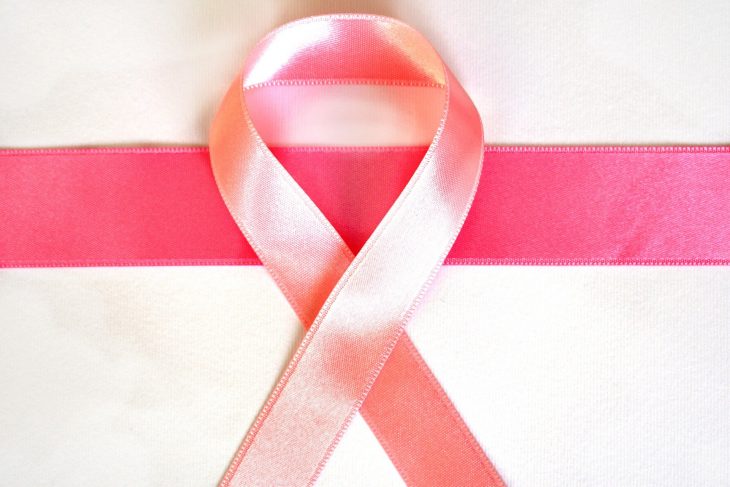
- Definition: Cancer that develops from breast tissue
- Gender: Mostly women, but also men
- Statistics: The leading type of cancer in women
- Symptoms: Lump in the breast, change in breast shape, dimpling of the skin
- Survival Rate: 80 to 90% in the developed world survive first 5 years
- Statistics: 1 in 8 women is diagnosed with breast cancer at some point in life
- Stages: 0 (pre-cancerous) – 4 (metastatic cancer)
- Treatment: Surgery, medication, radiation
- Prevention: Active, healthy lifestyle
- Charities: Thousands of charities all over the world
- Cause: There Are Multiple Environmental and Hereditary Risk Factors
- Types: Invasive Ductal Carcinoma Is the Most Common Type of Breast Cancer
- Prognosis: Type, Size, Stage of Cancer, Age and General Health Determine Survival Rate
- History: Breast Cancer Has Been Known for Almost 5,000 Years
- Treatment: Surgery Is the Most Common Type of Treatment
- Statistics: Only 1% of Breast Cancer Patients Are Men
- Pain: Most Breast Cancers Do Not Cause Pain
- Age: The Risk of Getting Breast Cancer Increases with Age
- Statistics: Over 2.5 Million Women with a History of Breast Cancer Live in the USA Today
- Prevention: Mammograms Can Reduce the Number of Deaths by 30 to 40%
- 85% of Breast Cancer patients have no family of the disease
- Women who drink excessively have a 50% higher chance of getting Breast Cancer
- Dense Breasts carry greater Breast Cancer risk
- The disease women are most afraid of is Breast Cancer
- The youngest Breast Cancer survivor was only 3 years old
- The left breast is more likely to develop cancer
- Breastfeeding decreases the risk of Breast Cancer
- Breast Cancer is the second most common cancer type among American women
Breast Cancer Facts Infographics

There Are Multiple Environmental and Hereditary Risk Factors
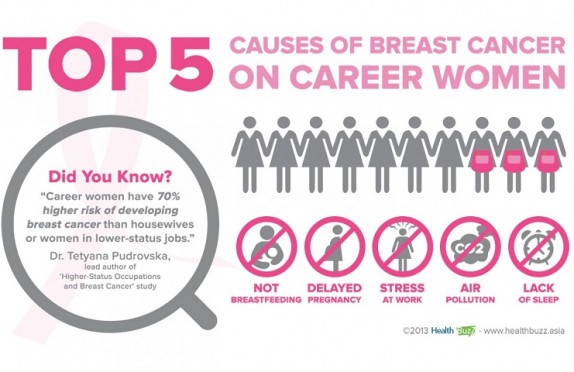
One of the most interesting breast cancer facts is certainly the one that deals with risk factors. Unhealthy food, alcohol, smoking, passive lifestyle, exposure to microbes, chemicals and toxins, age, and poor medical care are just a few of the major environmental risk factors that can cause breast cancer.
Breast cancer is also hereditary; women who carry a harmful mutation of the genes BRCA1 or BRCA2 have 60 to 80% chance of developing breast cancer. There are also some other genes that cause cancer and various genetic disorders that are known under the name family cancer syndromes and can spread the disease to the next generation.
Invasive Ductal Carcinoma Is the Most Common Type of Breast Cancer
Invasive Ductal Carcinoma (IDC) is a cancer that begins in the milk ducts and invades the surrounding breast tissue. It makes up around 80% of all invasive breast cancer diagnoses. The second most common type is Ductal Carcinoma In Situ (DCIS), which is non-invasive or pre-invasive (can later invade other parts of the body), diagnosed in 1 in 5 cases of breast cancer.
The third most common type is Invasive Lobular Carcinoma (ILC), which starts in the lobules and has a greater chance of spreading to other parts of the body. These three most common types of breast cancer represent about 75% of all breast cancers.
Type, Size, Stage of Cancer, Age and General Health Determine Survival Rate
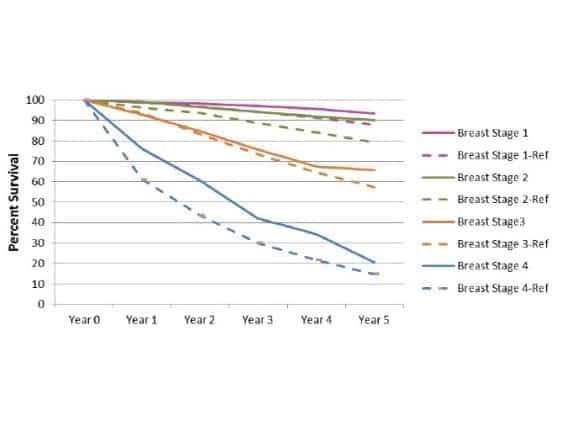
In addition to these factors, there are other minor ones, and appropriate prognosis can be made only by doctors who specialise in the field. The stage of breast cancer influences survival rate and life expectancy the most as it determines how advanced the disease is. In general, stage 0 and I breast cancers have near 100% 5-year survival rate, stage II over 90%, stage III over 70%, and stage IV over 20% 5-year survival rate.
As the survival period prolongs, this rates decrease – a stage IV breast cancer, for example, has a 10-year survival rate of about 10% at optimal medical care.
Breast Cancer Has Been Known for Almost 5,000 Years
The oldest evidence of breast cancer dates back to ancient Egypt in the 3rd millennium BC. The disease was, of course, untreatable and was sometimes seen as divine punishment, but it remained fairly uncommon until the 19th century due to the simple fact that most people died from infectious diseases and poor general health at a much younger age than at which breast cancer usually develops.
Although the removal of diseased tissues occurred as early as the 6th century AD, less radical (and more successful) treatments appeared only in the second half of the 20th century, with radiation and a systematic approach to cancer patients care.
Surgery Is the Most Common Type of Treatment
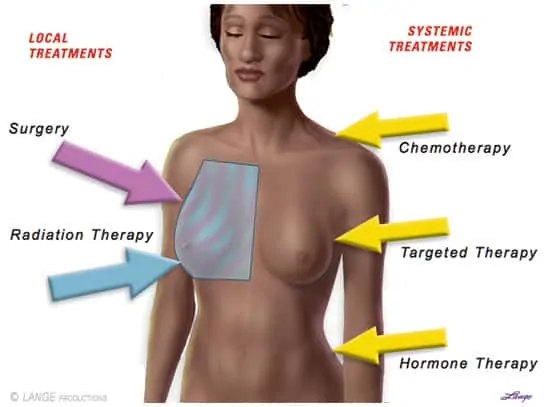
Breast cancer facts also reveal that it is the oldest one. In general, there are two types of surgeries in connection to breast cancer: mastectomy (removal of the breast) and lumpectomy (removal of the lump only or a part of the breast). Surgical treatment is often followed (and sometimes also preceded) with other types of breast cancer treatments: radiation therapy, chemotherapy, hormonal therapy and others.
Only 1% of Breast Cancer Patients Are Men
This means about 2,000 new cases each year in the USA and about 450 deaths as a direct result of the disease. Although men are 100 times less likely to get breast cancer, they are, on average, diagnosed a few years later than women, which consequently means worse prognosis on average. Breast cancer facts show that in about half of cases, breast cancer in men is diagnosed only in stage III or IV, greatly decreasing survival rate.
Most Breast Cancers Do Not Cause Pain
Although some types of breast cancer hurt, most of them don’t cause any pain, at least if caught in the early stages. Pain is thus only present in later stages of cancer and sometimes as a consequence of invasive or very intensive treatment.
The Risk of Getting Breast Cancer Increases with Age
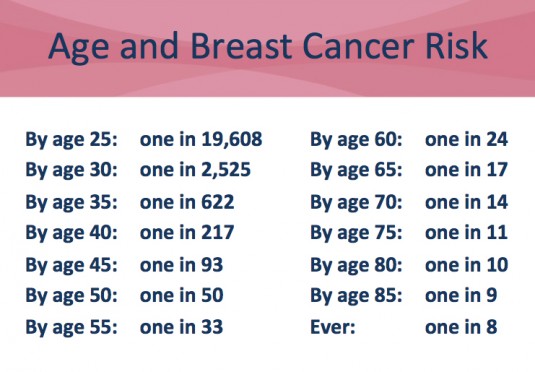
As women get older, their chances of getting breast cancer increase. A woman in her 60s is 100 times more likely to get the disease than a woman in her 20s. For women in their 20s, the risk is close to 0, and in their 30s, the chances are about 0.5%. But the chances increase in the 40s to 1.5%, in the 50s to almost 2.5%, in the 60s to 3.5% and in the 70s to almost 4%. About 95% of all breast cancer diagnoses in the US are given to women over 40.
Over 2.5 Million Women with a History of Breast Cancer Live in the USA Today
Some of them are cancer-free and some of them still live with the disease, and the future number is likely to increase, since breast cancer awareness is increasing and medical care advances from decade to decade. For 2015, it is estimated that around 230,000 new cases of invasive breast cancer will occur and 40,000 patients will die from the disease.
Mammograms Can Reduce the Number of Deaths by 30 to 40%
At least, that is what breast cancer facts statistics say for the most endangered group – women over 40 years of age. Regular mammograms help detect the disease earlier, greatly improving survival rates and life expectancy.
85% of Breast Cancer Patients Have No Family History of the Disease
Although the disease can be hereditary and the risk of getting the disease, if it is present in a first-degree relative such as mother, sister or daughter, is almost doubled, the statistics clearly show that most cases of breast cancer occur due to environmental reasons. This also means that we can do a lot ourselves to decrease our chances of getting the disease by living a healthy life.
Women Who Drink Excessively Have a 50% Higher Chance of Getting Breast Cancer
Studies have shown that women who drink between 2 and 5 glasses of alcohol daily greatly increase their chances of getting the disease. However, women who drink only 1 glass daily are only slightly more likely to get breast cancer. Since alcohol in moderate quantities brings several health benefits, it is important to find the right balance.
Dense Breasts Carry Greater Breast Cancer Risk
Dense breasts have more glandular tissue (milk-producing tissue) and comparatively less fat. Since breast cancer typically occurs in the glandular tissue, this puts women with dense breasts at greater risk. Not only because their chances of getting the disease are slightly higher, but also because cancer tissue is harder to detect with mammograms if breasts are dense. And how can women determine their breast density? Not by feel or sight, unfortunately; only a mammogram can reveal the density.
The Disease Women Are Most Afraid of Is Breast Cancer
This can also be beneficial in enabling early detection of the problem, but according to the disease statistics, women are at fault when fearing breast cancer the most. The disease that kills the most women over the age of 65 in the US is heart disease; it actually causes the death of more elderly women than all cancers combined. The chances of dying from breast cancer are thus about 5 times lower than the chances of dying from heart disease.
The Youngest Breast Cancer Survivor Was Only 3 Years Old

Aleisha Hunter comes from Canada. In 2010, when she was only 3 years old, she had a full mastectomy, during which doctors completely removed her nipple, areola, breast tissue and the lymph nodes under her arm. Aleisha is now cancer-free and her prognosis looks good.
The Left Breast is More Likely to Develop Cancer
Breast cancer facts reveal that the cancer more often develops in the left breast than in the right one. One of the possible reasons for this could be that left breasts of most women are slightly larger on average and thus have more tissue, but researchers in the field of breast cancer are still searching for a full explanation.
Breastfeeding Decreases the Risk of Breast Cancer
Studies have shown that mothers who breastfeed their babies typically have a lower risk of getting breast cancer at a later point in life. And the longer the breastfeeding period, the lower the chances of getting the disease – one breastfeeding year can decrease the chances by 4.3% on average. Women who don’t breastfeed increase their chances of getting breast cancer due to increased exposure to endogenous oestrogen. Women who do not have children are similarly also at greater risk.
Breast Cancer Is the Second Most Common Cancer Type among American Women
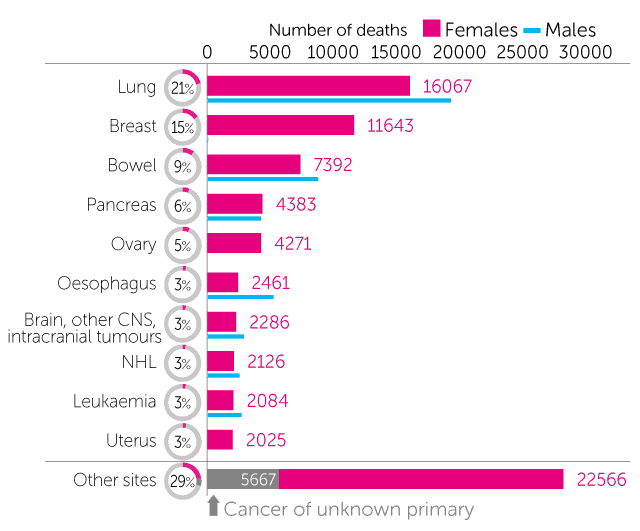
The first is skin cancer, most often caused by excessive exposure to ultraviolet radiation from the sun. Coincidentally, breast cancer is also the second most common cause of cancer-related death after lung cancer, which is most often caused by smoking.
Breast Cancer Facts – Facts about Breast Cancer Summary
 Breast cancer is one of the leading diseases among women nowadays. Although men can also get it, their chances are hundred times smaller than those of women. Almost 250,000 American women will be diagnosed with breast cancer this year, and about 40,000 of them will die from the disease. But the prognosis for breast cancer patients constantly improves, and nowadays close to 90% patients survive the first 5 years after the diagnosis. Surgery, radiation and chemotherapy are the most common forms of treatment, but a healthy lifestyle can do much to prevent the disease from appearing. Age and sex are the two greatest risk factors, with elderly females being the most at-risk group.
Breast cancer is one of the leading diseases among women nowadays. Although men can also get it, their chances are hundred times smaller than those of women. Almost 250,000 American women will be diagnosed with breast cancer this year, and about 40,000 of them will die from the disease. But the prognosis for breast cancer patients constantly improves, and nowadays close to 90% patients survive the first 5 years after the diagnosis. Surgery, radiation and chemotherapy are the most common forms of treatment, but a healthy lifestyle can do much to prevent the disease from appearing. Age and sex are the two greatest risk factors, with elderly females being the most at-risk group.
Was this page helpful?
Our commitment to delivering trustworthy and engaging content is at the heart of what we do. Each fact on our site is contributed by real users like you, bringing a wealth of diverse insights and information. To ensure the highest standards of accuracy and reliability, our dedicated editors meticulously review each submission. This process guarantees that the facts we share are not only fascinating but also credible. Trust in our commitment to quality and authenticity as you explore and learn with us.


